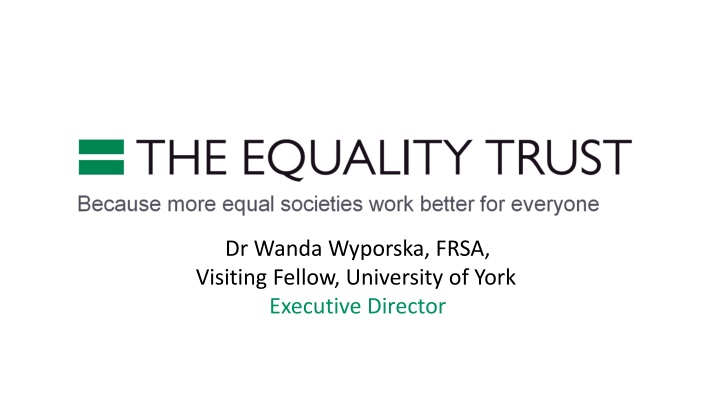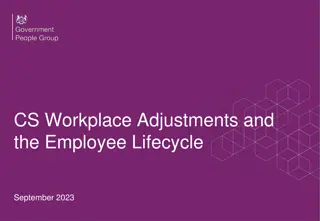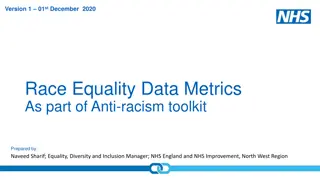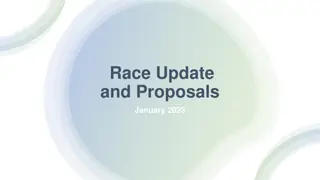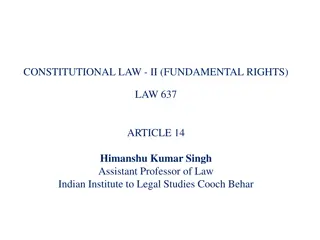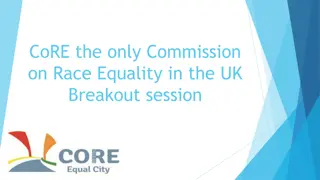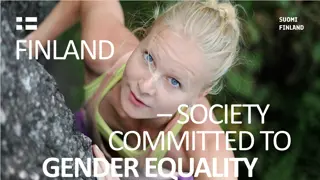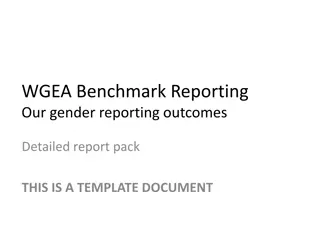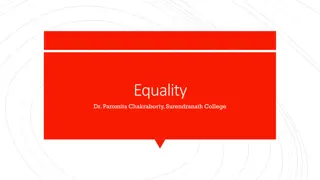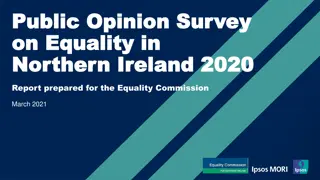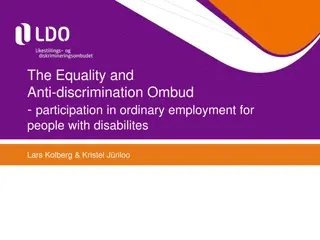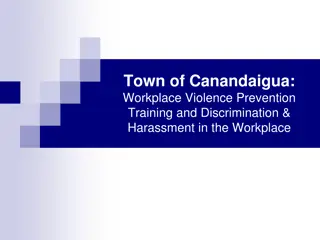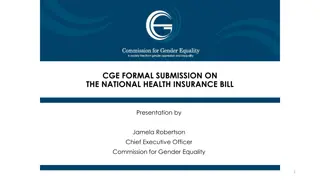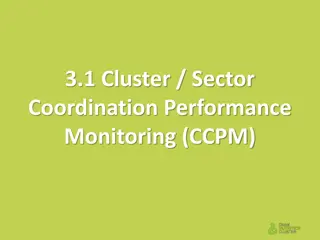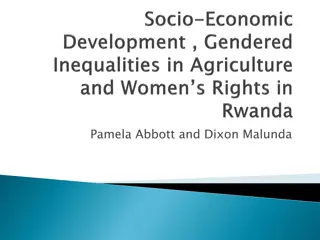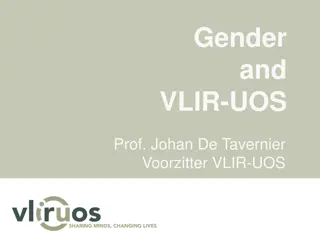Challenges in Achieving Workplace Equality
Dr. Wanda Wyporska, FRSA, discusses the barriers to workplace equality, highlighting statistics on wealth and pay disparities in the UK. She explores the impact of inequality on economic growth and identifies the drivers contributing to societal inequities, including technology, childhood background, education, political systems, and globalization.
Download Presentation

Please find below an Image/Link to download the presentation.
The content on the website is provided AS IS for your information and personal use only. It may not be sold, licensed, or shared on other websites without obtaining consent from the author.If you encounter any issues during the download, it is possible that the publisher has removed the file from their server.
You are allowed to download the files provided on this website for personal or commercial use, subject to the condition that they are used lawfully. All files are the property of their respective owners.
The content on the website is provided AS IS for your information and personal use only. It may not be sold, licensed, or shared on other websites without obtaining consent from the author.
E N D
Presentation Transcript
Dr Wanda Wyporska, FRSA, Visiting Fellow, University of York Executive Director
Can we really gain equality in the workplace?
Wealth Tracker Wealth Tracker Richest 1,000 people own more wealth than 40% of households, or 10.2 million families. In the last year alone the combined wealth of Britain s 1,000 richest people increased by 82.5 billion to 658 billion.
Pay Tracker Pay Tracker CEOs in the UK s top 100 companies now pocket an average of 5.3m* each year, or 386 times that of a worker earning the National Living Wage. Over two thirds (67%) of FTSE 100 CEOs are paid more than 100 times the average UK salary. Ninety per cent of FTSE 100 CEOs are paid at least 100 times more than the National Living Wage. Equality Trust analysis also found that FTSE 100 CEOs are now paid: 165 times more than a nurse. 140 times more than a teacher. 132 times more than a police officer. 312 times more than a care worker.
Inequality as a threat Inequality as a threat IMF Lower net inequality is robustly correlated with faster and more durable growth." OECD Policies to reduce income inequalities should not only be pursued to improve social outcomes but also to sustain long-term growth." CBI Research from the IMF shows that nations with higher inequality tend to enjoy shorter periods of growth, and also tend to grow more slowly.
Drivers of inequality Drivers of inequality Technology: smaller businesses, more higher skilled and fewer lower skilled jobs Childhood: SES, parental income (50% in UK v 15-25% in Nordic countries) as a predictor Education: good early years provision Political systems: proportional representation, increased democracy Globalisation: inequality increasing within countries and decreasing between countries
Reflections on the effects of inequality Reflections on the effects of inequality Education and Social Mobility Crisis, debt and inflation Physical health Mental Health Engagement with Politics and Society Trust
What does this look like? What does this look like? Inequality encourages us to see each other as potential threats and we are therefore more likely to adopt dominance strategies (competition, bullying, violence). Greater equality encourages us to see each other as potential allies and we are therefore more likely to adopt affiliative strategies (co-operation, helping, kindness). Inequality encourages us to bow down before power and kick down on those less powerful in order to shore up our own social status. In monkeys this observed behaviour has been termed the Bicycling Reaction .
Isnt this just all about class? Rather than thinking of the effects of income distribution and of social class as separate influences on health and social functioning, it is more accurate to think of income inequality as providing the framework around which social class differentiation takes place. Wider income differences lead to bigger social distances, more marked differentiation in terms of housing, cars, clothing and all the cultural markers of status - and so to a more divided society. Wilkinson & Pickett: FAQs, The Equality Trust website
How material differences create social distances... More chronic stress, more illness, more bad choices, more violence, less trust, less social confidence and less social interaction (less community life or social capital ) More worry about how we are seen and judged More social evaluation anxiety more worry about DISRESPECT (threats to self-esteem & social status, fear of negative judgements) More superiority and inferiority More status competition and consumerism More status insecurity More inequality Source: Wilkinson & Pickett, The Spirit Level (2009)
What about the workplace?
Collective solidarity Collective solidarity us v them us v them Sowing division, creating new alliances as a distraction Political rhetoric and media Role of trade unions: structures, reps, image, appeal, insurance? Workplace engagement and beyond pathways to power Discrimination prevention or cure? Who carries the burden? Overdisciplined, underpromoted, culture of workplace reflects society
The Big Picture The Big Picture Equality reps Workers on Boards Increase organising in the private sector Increase collective cases Pay ratios Gender, race, disability pay gaps Greater co-operative share of business Fight for / Fight against : Equality v Inequality
Knowledge is power Knowledge is power Employment and equality rights Public Sector Equality Duty (Section 149) Socio-Economic Duty (Section 1) when making decisions of a strategic nature about how to exercise its functions to have due regard to the desirability of exercising them in a way that is designed to reduce the inequalities of outcome which result from socio-economic disadvantage .
The workplace is a microcosm of society
www.equalitytrust.org.uk @equalitytrust Wanda.Wyporska@equalitytrust.org.uk
